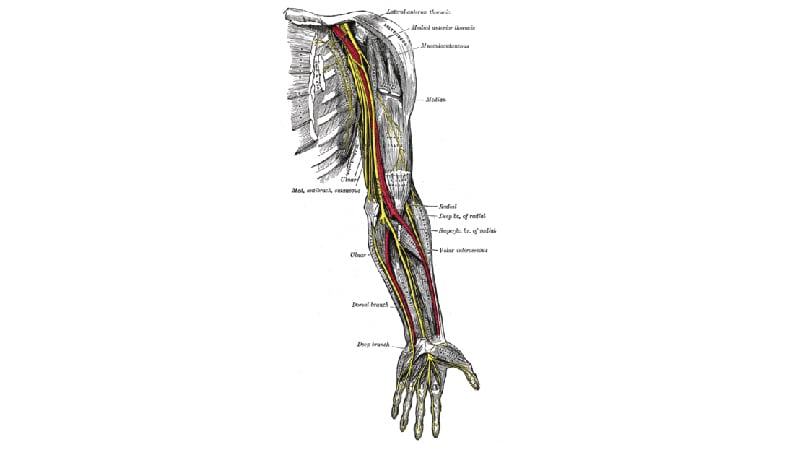The study covered in this summary was published on medRxiv.org as a preprint and has not yet been peer reviewed.
Key Takeaways
-
Patients with severe COVID-19 are at increased risk for peripheral nerve injuries (PNIs) that can lead to long-term neurologic impairment.
-
Mechanical stress may contribute to the development of PNIs. The most commonly observed site of injury was the ulnar nerve.
-
The use of a wireless pressure sensor may help prevent neurologic damage in patients at risk of developing PNIs.
Why This Matters
-
Although critically ill patients are known to have increased risk of PNIs, the incidence of focal nerve damage in patients with severe COVID-19 has not been determined.
-
Patients with severe COVID-19 may be particularly at risk of developing PNIs, owing to the use of prone positioning interventions that are recommended for mechanically ventilated patients.
-
Patients with PNIs experience a slow recovery that is often incomplete, and patients who have had severe COVID-19 are likely to experience worse outcomes.
Study Design
-
This retrospective study evaluated the incidence and anatomic distribution of PNIs in patients who had survived severe COVID-19.
-
The first part of the study included 34 patients who had been admitted to one of three academic medical centers in Illinois between April 2020 and March 2021. In most cases, electrodiagnostic testing and/or neuromuscular ultrasound results were available to confirm the diagnosis and localization of the injury.
-
The second part involved evaluation of prior case series that included a minimum of five patients diagnosed with PNIs following severe COVID-19.
-
Additionally, in a proof-of-concept study, two patients who were admitted to the ICU for severe COVID-19 were monitored with a wireless pressure sensor system applied to the skin on the elbow.
Key Results
-
At one of the rehabilitation hospitals included in the retrospective study, PNIs were diagnosed in 10.7% of patients admitted following severe COVID-19, compared with 0.6% of patients admitted for other reasons.
-
Of the 34 patients included in the retrospective study, a total of 66 PNIs were reported. There was an average of 1.9 ± 1.2 PNIs per patient (range, 1 – 6), and 53% of patients had two or more PNI sites.
-
The review of previous case studies identified 117 nerve injuries in 58 patients.
-
Combined data from the retrospective study and the previously published cases indicate that 25.1% of PNIs involved the ulnar nerve.
-
Other commonly affected nerves included the common fibular (15.8%), sciatic (13.1%), median (9.8%), brachial plexus (8.7%), and radial (8.2%) nerves.
-
The locations suggest that nerve damage results from mechanical stress over a bony prominence.
-
Using a wireless pressure sensor, the authors were able to identify an adjusted prone position that reduced pressure on the elbows.
Limitations
-
Being a retrospective study, these results do not prove that positioning of patients with severe COVID-19 causes PNIs.
-
The study did not include a control group.
-
Patients with less severe neurologic damage may not have undergone advanced imaging, which may have skewed the results and led to an underestimation of the incidence of PNIs.
Disclosures
-
The study did not receive any funding.
-
The authors have disclosed no relevant financial relationships.
This is a summary of a preprint research study, “Acquired Peripheral Nerve Injuries Associated With Severe COVID-19,” written by Colin K. Franz from Northwestern University Feinberg School of Medicine and colleagues and published on medRxiv.org. It is provided to you by Medscape. This study has not yet been peer reviewed. The full text of the study can be found on medRxiv.org.
For more news, follow Medscape on Facebook, Twitter, Instagram, and YouTube.
Source: Read Full Article



